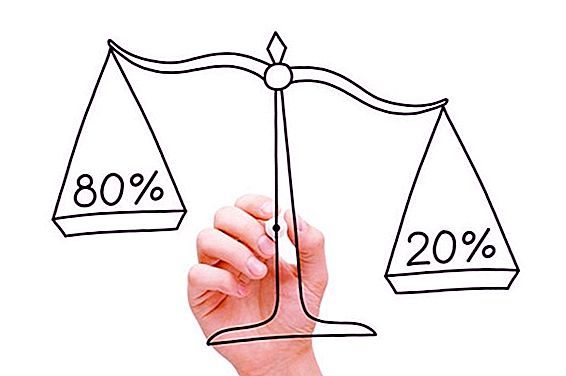Which of us did not want to increase our own effectiveness? Do not waste time on unnecessary tasks, achieve the desired results faster? There is a ready-made solution - the Pareto rule. Using this principle, it will be possible to save not only time, but also money, strength.

Our universe obeys a variety of laws, some of which are a mystery to most people. Almost any mathematician will confidently say that life cycles can be described by logic and numbers. However, the empirical path of knowledge is popular. A vivid confirmation of this should be considered the Pareto law, or the 80/20 principle
The essence of the principle
The rule says: only 20% of the efforts bring 80% of the result. The rest of the applied forces will bring only 20% of the result. It should be noted that this rule has been repeatedly proved, various experiments were carried out. The discovery of the law belongs to the Italian scientist Wilfredo Pareto.
Many successful people are actively using the pattern identified by the Italian economist. In other words, the rule not only looks beautiful, but in practice it is effective. Large entrepreneurs are trying to make decisions that will bring maximum benefit to their business.
Wilfredo believed that with a competent approach to the selection of the most important tasks, you can get the maximum planned result. Other improvements do not carry any effect. The Pareto principle is successfully used in the field of analysis. With its help, it will be possible to optimize any activity. Widely used in the economic field, management and politics.
The accuracy of the ratio may be in doubt. However, numbers are not an axiom. They are a guide. The Pareto rule demonstrates that causes and effects are not evenly distributed. This can be seen in any field of activity. And numerical values cannot be considered significant. Much more important is the fact that these indicators differ.
Disadvantage
Understanding that only 20% of the actions will bring the necessary result, a person is still forced to spend the remaining 80% of the effort. Otherwise, to organize the work will not work. For example, the customer needs only a certain part of the products the entrepreneur is engaged in the production of. However, he is unlikely to be pleased if the supplier starts to produce only this percentage. He needs to choose from something. And such logic can be traced in any field of activity.
Law Consequences
- There are few significant aspects, and a huge number of non-significant ones. Only a small fraction of the action will succeed.
- Most of the actions do not contribute to the desired result. This is a waste of time and effort.
- Usually the results achieved are different from what was planned.
- A significant part of the problems happens due to a small number of highly destructive forces.
Conclusions from the principle
- It is necessary to analyze the started projects for the application of the Pareto rule. It is recommended to highlight key points. It is on their implementation that 20% of efforts should be directed.
- Before you make a commitment, it is worth remembering the rule. If you are sure that it will not be possible to work effectively on new tasks, it is better to abandon them.
- It is not recommended to perform perfectly all tasks. It is desirable to concentrate energy on the most important thing. You must be able to determine priorities.
- Pareto law is recommended to use always and everywhere. Gradually, the analysis will become a habitual occupation, due to which it will be possible to save energy on minor tasks and to give all the best to those areas that actually benefit.
How to use the rule in life?
First of all. A significant part of the time should be spent on what will really benefit. A novice entrepreneur immediately acquires a huge number of connections. We are talking about school friends, classmates, people who had to meet at various events, etc. Many of the acquaintances will not benefit the business. Therefore, all attention should be paid only to those 20% of people, thanks to whom the business will move from a dead center. But communication with the rest is not recommended.
Secondly, 20% of the time is 80% of the memory. Daily pastime gives not so many good memories. Therefore, it is recommended to focus only on those actions and activities that are really important. It is unlikely that subsequently someone will recall a business breakfast or another forum.
Thirdly, important books are worth reading. Only 20% of what you read will bring 80% of the benefits. A small part of books is really capable of playing a significant role in life, and reading all the others only takes time. Therefore, in life, more space should be occupied by literature, which contributes to emotional, aesthetic and spiritual education.
Fourthly, it is recommended to single out only the important, discarding everything else. During reading, a person learns a huge number of important lessons and gains experience. However, the books contain a lot of information. This is a secondary plot, and lyrical digressions, and definitions, and the story of the creation of something. We need to learn to highlight only those moments that are really important, interest in a certain period of time.
Fifth, we need to get rid of trash. Only a small part of things is used constantly. Other items clutter up the workplace or wardrobe. It is recommended to leave only the most necessary things, and the rest either discarded or removed away. It is important to follow the rule: if you haven’t dressed or used something for two years, then this is not necessary.
